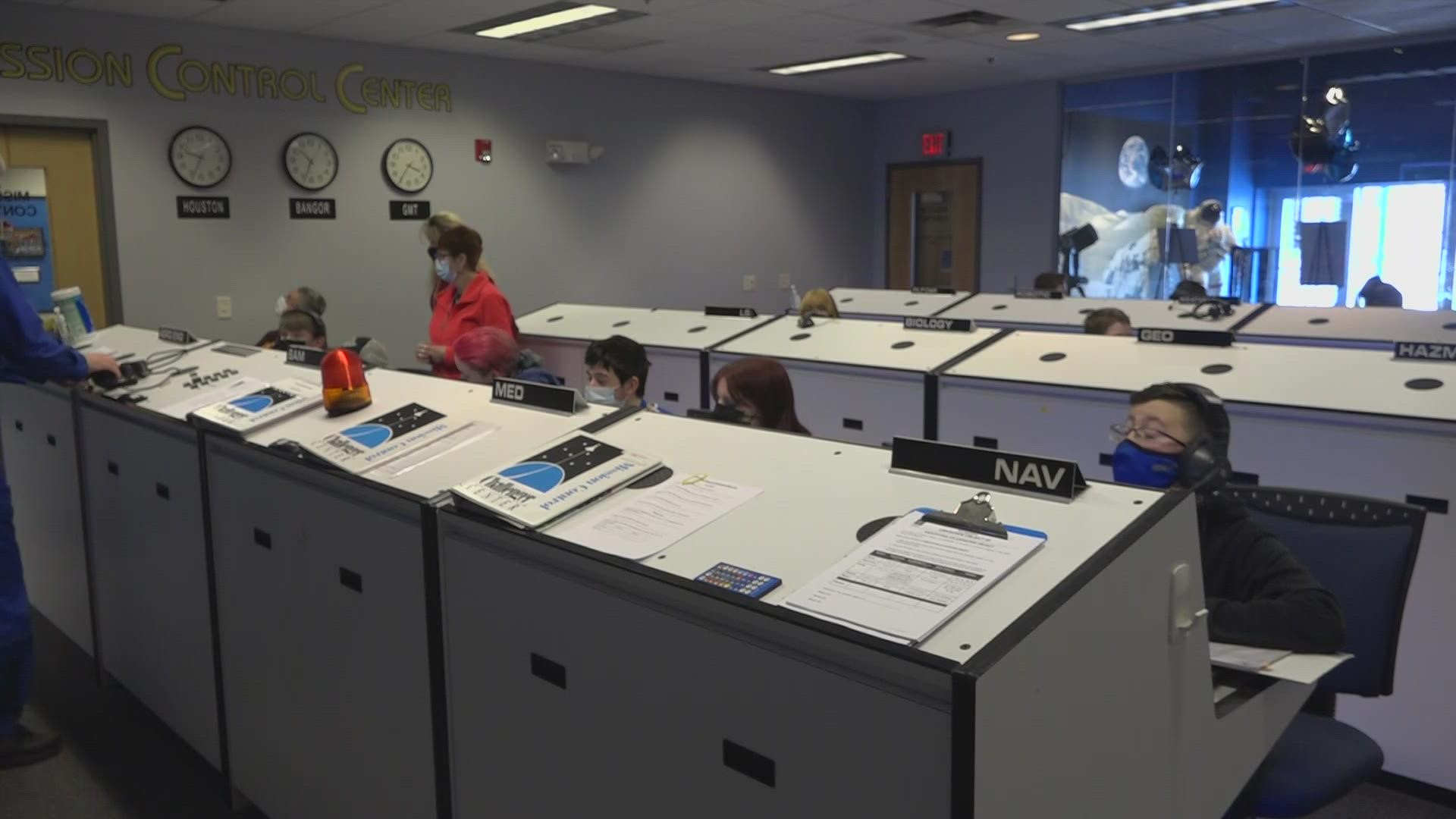BANGOR, Maine — The Challenger Learning Center of Maine kicked off a new experiment Wednesday modeled after NASA's 2019 mission to space.
Caravel Middle School students had the chance to conduct a simulation of the Jackson Laboratory's (JAX) "Might Mice in Space" project.
Researchers originally wanted to look at the effects of going into space for extended periods on mammals. It had been recorded that there was a significant loss of muscle mass and bone density of astronauts returning from a mission in space.
So to take a closer look at this phenomenon, a mission was planned to study mice, some with and some without a specific gene, to compare the loss of bone and muscle mass during the month-long expedition in zero gravity.
It was expected that the mice without the specific gene known for stopping muscle and bone growth would maintain their muscle and bone mass. The results proved that to be true. The study showed the "mighty mice," who lacked the specific gene, did not lose as much muscle mass and bone density as the normal mice.
The data from this project helped researchers better understand the bone and muscle loss of humans in space. And it will also help researchers develop new ways to decrease the bone and muscle loss in humans affected by muscle atrophy types of diseases here on earth.
"We're always looking at ways to talk about different STEM careers. You know, we use space as the spark, but we want to let them know these are things you could do," Kirsten Hibbard, executive director of the Challenger Learning Center of Maine, said.
This is why students weren't just studying the mission. They were able to complete it themselves. Working together, each student was assigned a different task for the mission, analyzing data and solving problems in real-time until the mission was complete.
Charlie Wray is the vice president of education at the Jackson Laboratory.
"Our goal from the education office at JAX is to engage students. Get them excited, so they'll go on and study science in college and go into careers in the great science and research enterprises in the United States," Wray said.
The workers at the Challenger Learning Center also included presentations on two of Maine's most well-known astronauts: Chris Cassidy and Jessica Meir. Meir was actually on the NASA mission that studied mice behavior in 2019. All this to inspire the next generation of Maine astronauts.
"Getting an experience like this is important at the middle school age and the high school age. I think in the United States, there's a big loss of STEM students in the colleges. JAX and the Challenger Center and other research and education partners are trying to fix that problem," Wray said.
The Challenger Learning Center hopes to continue hosting more field trips like this for students throughout Maine in the future.

